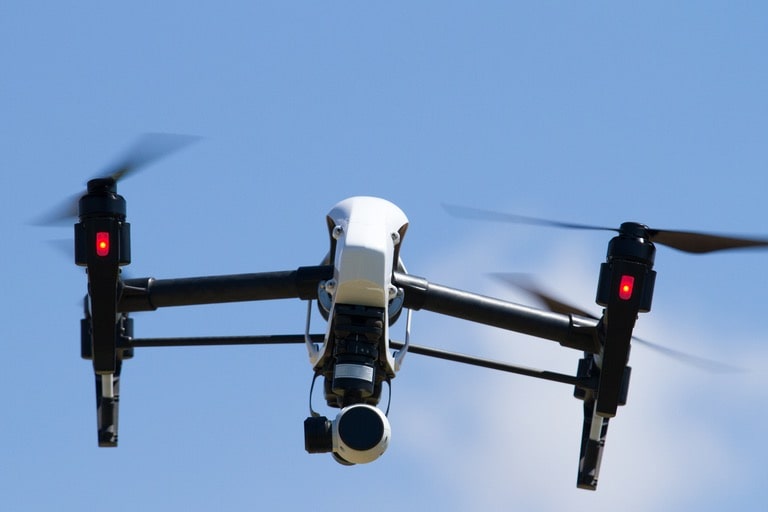Strategic Reconnaissance: The Rise of Drones in Defense Operations

The landscape of defence operations has undergone a significant transformation with the integration of advanced technology. Among these advancements, drones have emerged as a pivotal element in modern military strategies. These crewless aerial vehicles (UAVs) offer unprecedented reconnaissance, surveillance, and combat capabilities.
Military drones are now integral to defence operations, providing crucial real-time data and enhancing operational efficiency. This article explores how drones are revolutionizing defence operations, focusing on their impact on military tactics, intelligence gathering, precision strikes, logistical support, and disaster response.
How Unmanned Aerial Vehicles are Transforming Military Tactics?
Crewless aerial vehicles (UAVs) have brought about a paradigm shift in military tactics. Traditionally, reconnaissance and surveillance missions involved significant risk to personnel and required extensive resources. They have changed this dynamic by offering a safer and more efficient means of gathering intelligence.
Equipped with high-resolution cameras, infrared sensors, and advanced communication systems, military drones can provide continuous surveillance over vast areas. One of the most significant advantages of military drones is their ability to operate in hostile environments without risking human lives. They can be deployed for long-duration missions, providing real-time data to commanders and allowing for informed decision-making.
This capability helps monitor enemy movements, identify potential threats, and assess battlefield conditions. By offering a comprehensive overview of the operational environment, they enhance situational awareness and improve tactical planning. They can be equipped with various payloads, including electronic warfare systems and precision-guided munitions.
This versatility allows for different mission profiles, from intelligence gathering to direct combat support. The ability to quickly adapt to changing mission requirements makes UAVs indispensable in modern military operations. Defence forces can achieve greater operational flexibility and effectiveness by integrating UAVs into their strategies.
Enhancing Intelligence, Surveillance, and Reconnaissance (ISR)
Intelligence, Surveillance, and Reconnaissance (ISR) are critical components of military operations. The ability to gather accurate and timely intelligence can determine the success of a mission. ISR capabilities are enhanced by continuous and comprehensive coverage of areas of interest.
Some come with high-resolution cameras and sensors that can capture detailed imagery and video, offering valuable insights into enemy activities and terrain conditions. This real-time data is essential for identifying threats, planning missions, and conducting post-mission analysis.
Integrating artificial intelligence and machine learning further enhances ISR capabilities by enabling them to process and analyze data autonomously. These technologies can identify patterns, detect anomalies, and provide actionable intelligence, reducing the workload on human analysts.
Using them in ISR operations also improves the speed and accuracy of intelligence gathering. They can quickly be deployed to monitor specific areas, providing immediate feedback to commanders. This capability is precious in dynamic and rapidly changing environments, where timely intelligence is critical for decision-making. They significantly enhance ISR operations’ effectiveness by offering persistent surveillance and rapid data collection.
Precision Strikes and Combat Support
One of the most transformative applications of military ones is their use in precision strikes and combat support. They are equipped with precision-guided munitions that can engage targets with high accuracy, minimizing collateral damage and reducing the risk to friendly forces. This capability has revolutionized military operations, allowing for more precise and effective targeting.
They can strike against high-value targets like enemy command centres, weapons depots, and infrastructure. Accurately identifying and engaging these targets from a distance provides a significant tactical advantage. They can operate in contested environments, where traditional aircraft might face substantial threats, enhancing the reach and
Ethical and Regulatory Considerations
As military UVAs become more prevalent, ethical and regulatory considerations will become increasingly important. Using drones in combat raises questions about the moral implications of autonomous weapon systems and the potential for unintended consequences. Establishing clear guidelines and frameworks to ensure the responsible use of military UVAs, minimizing the risk of civilian casualties and collateral damage, is essential.
Regulatory bodies and international organizations must develop and enforce standards for deploying and using military UVAs. These standards should address issues such as airspace management, privacy, and the use of force. By establishing a robust regulatory framework, it is possible to balance the benefits of drone technology with the need to protect human rights and maintain international security.
Integration with Other Defense Technologies
Integrating military ones with other defence technologies will enhance their capabilities and impact. For example, combining them with satellite communication systems will enable real-time data transmission and global coverage, ensuring commanders can access up-to-date information regardless of location. Using it with cyber warfare capabilities can enhance their effectiveness in disrupting enemy communication and command networks.
As they become more integral to defence operations, addressing ethical and regulatory considerations is essential to ensure the responsible use of this powerful technology. By integrating drones with other defence platforms and providing comprehensive training and education, military forces can fully leverage their capabilities to achieve strategic objectives and maintain security.
Its continued evolution and integration will undoubtedly shape the future of defence operations, offering new opportunities and challenges for armed forces worldwide. A more effective, efficient, and ethical approach to modern warfare can be created by embracing this technology and addressing the associated considerations.




